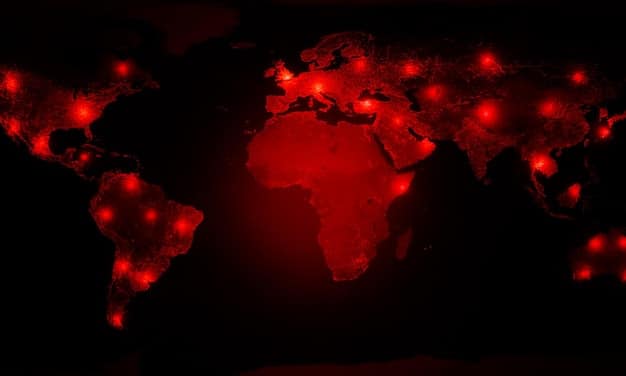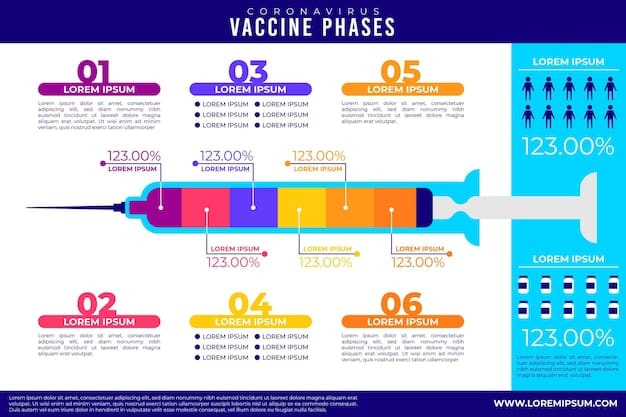Big Data’s Role in Pandemic Prediction & Prevention

Leveraging vast datasets and advanced analytics, big data is revolutionizing public health, offering unprecedented capabilities to enhance pandemic prediction, improve real-time surveillance, and inform targeted intervention strategies, building on crucial lessons learned from the global COVID-19 experience.
The global upheaval caused by the COVID-19 pandemic served as a stark reminder of humanity’s vulnerability to infectious diseases. While the crisis highlighted deficiencies in preparedness and response, it also underscored the immense potential of technological advancements, particularly in the realm of The Role of Big Data in Predicting and Preventing Pandemics: Lessons from the COVID-19 Era. From tracking viral spread to understanding disease progression, large-scale data collection and analysis have emerged as indispensable tools in the public health arsenal, shaping our approach to future outbreaks.
Understanding Big Data and Public Health
Big data, characterized by its immense volume, velocity, and variety, has transformed numerous sectors. In public health, this translates into an unprecedented ability to collect, process, and analyze vast quantities of information from diverse sources, far exceeding traditional epidemiological methods. This includes everything from electronic health records and laboratory test results to social media trends and mobility data.
The application of big data in public health is not merely about accumulating information; it’s about extracting actionable insights. By identifying patterns, correlations, and anomalies within these datasets, public health officials can gain a deeper understanding of disease dynamics, predict potential outbreaks, and evaluate the effectiveness of interventions. This paradigm shift moves public health from a reactive posture to a more proactive and predictive one, enabling timelier and more effective responses.
The Rise of Data-Driven Epidemiology
Traditional epidemiology relies heavily on manual data collection and statistical analysis. While robust, these methods can be slow and may not capture the full complexity of modern disease outbreaks. The advent of big data accelerates this process substantially, offering near real-time insights.
- Faster Data Acquisition: Automated systems and digital platforms allow for continuous data streams.
- Broader Data Sources: Integrating unconventional datasets like wastewater surveillance or search engine queries.
- Enhanced Analytical Power: Machine learning and AI can uncover subtle trends missed by human analysis.
Volume, Velocity, and Variety in Action
Consider the sheer volume of data generated daily during a pandemic: millions of diagnostic tests, hospital admissions, vaccine doses administered, and public health surveys. The velocity refers to how quickly this data is generated and needs to be processed – often in real-time to be effective. The variety encompasses the disparate formats and sources, from structured clinical data to unstructured text in news reports.
Harnessing this “three Vs” framework is critical for effective pandemic management. It permits health authorities to visualize the spread of a pathogen across populations, understand demographic vulnerabilities, and anticipate resource demands, all with a speed unimaginable a few decades ago. It’s about turning raw, disparate information into coherent, actionable intelligence at scale.
In essence, big data provides the infrastructure and tools necessary to move beyond simple data reporting to advanced predictive modeling and precision public health interventions. This foundational understanding sets the stage for exploring specific applications and lessons drawn from recent global health crises.
Predicting Outbreaks: Early Warning Systems and Modeling
The ability to predict when and where the next outbreak might occur is the holy grail of pandemic preparedness. Big data, coupled with sophisticated analytical techniques, offers a powerful means to develop early warning systems and predictive models, significantly enhancing our foresight in public health. This capacity for anticipation allows for the pre-positioning of resources, swift implementation of containment measures, and timely public health messaging, potentially saving countless lives and mitigating economic damage.
Traditionally, epidemic forecasting relied on established epidemiological curves and historical data. While valuable, these models often lagged behind the rapid pace of real-world outbreaks. Big data introduces dynamic, multifactorial models that can integrate a far wider array of indicators, leading to more accurate and timely predictions. These models learn and adapt as new data becomes available, continually refining their accuracy.

Leveraging Diverse Data Streams for Prediction
The richness of big data lies in its diversity. Beyond traditional clinical surveillance, data sources like social media, anonymized mobile phone location data, and even internet search queries can provide early signals of disease activity. For instance, a surge in searches for “loss of taste” or “fever clinic near me” could indicate a rise in respiratory illness before it registers in official clinical reports.
- Social Media Monitoring: Analyzing public posts for symptom clusters or unusual health complaints.
- Mobility Data Analysis: Tracking population movement to predict disease spread patterns from affected areas.
- Environmental Data: Some pathogens correlate with weather patterns; big data can integrate this.
Consider the insights gained from analyzing flight patterns or public transit usage. During the early days of COVID-19, understanding human movement was crucial for predicting the spread from initial epicenters to other regions. This type of analysis, only feasible with big data, proved invaluable for informing travel restrictions and quarantines.
Advances in Epidemiological Modeling
With big data, epidemiological models have evolved from simple SIR (Susceptible-Infectious-Recovered) models to complex, agent-based simulations. These advanced models can simulate individual interactions within a population, taking into account factors like age, contact networks, and adherence to public health measures.
Machine learning algorithms are at the heart of these predictive capabilities. They can identify subtle correlations between seemingly unrelated data points, allowing for highly granular predictions about specific communities or demographic groups. This level of detail empowers public health officials to target interventions more precisely, rather than resorting to broad, economy-crippling mandates.
The challenge remains in integrating these diverse data streams seamlessly and ensuring data quality. Privacy concerns also necessitate careful anonymization and ethical use of personal data. Despite these hurdles, the lessons from the COVID-19 era unequivocally demonstrate that investing in big data-driven predictive capabilities is no longer a luxury, but a necessity for global health security.
Real-time Surveillance and Contact Tracing
Effective pandemic management hinges on the ability to track disease progression and contain outbreaks as they happen. Big data has revolutionized real-time surveillance and enhanced contact tracing efforts, providing an unparalleled level of detail and speed compared to traditional methods. This immediate insight is crucial for understanding the current state of an epidemic and making rapid, informed decisions.
Historically, surveillance relied on reports from hospitals and clinics, often delayed and incomplete. While still essential, these traditional sources are now augmented by digital data streams that provide a much more dynamic and granular picture. This shift allows public health agencies to move from retrospective analysis to prospective, predictive action.
Digital Tools for Enhanced Surveillance
Many countries deployed digital tools during the COVID-19 pandemic to collect data on symptoms, test results, and vaccine status. These platforms, often in the form of mobile apps or online dashboards, aggregated data in real-time, allowing health authorities to visualize case numbers, hospitalizations, and deaths with unprecedented speed. This constant feed of information became critical for assessing the burden on healthcare systems and projecting future needs.
- Automated Reporting Systems: Digital platforms streamlining submission of test results from labs.
- Public-facing Dashboards: Providing transparent, up-to-date information on case counts and trends.
- Geographic Information Systems (GIS): Mapping disease hotspots and resource allocation visually.
The ability to overlay clinical data with geographic information allowed for the identification of specific neighborhoods or districts experiencing rapid case rises, enabling targeted testing and intervention strategies. This spatial analysis, powered by big data, became a cornerstone of urban public health responses.
The Role of Big Data in Contact Tracing
Contact tracing – identifying and notifying individuals who have been exposed to an infected person – is a labor-intensive but critical tool for containing infectious diseases. Big data has offered methods to make this process more efficient and scalable.
While manual contact tracing remains important, several regions experimented with app-based contact tracing, utilizing Bluetooth technology to anonymously log proximity to other app users. When a user tested positive, their close contacts could be notified, accelerating the process significantly. This approach, though facing privacy hurdles and adoption challenges, demonstrated the potential of automated, data-driven tracing.
However, the roll-out of these digital tracing tools highlighted a critical lesson: technology alone is not a panacea. Issues like public trust, data privacy concerns, and digital divides limited their effectiveness in many parts of the world. Successful implementation requires not just robust technology, but also strong public health infrastructure, clear communication, and community engagement. The COVID-19 experience proved that data’s power is amplified when human expertise and social factors are equally considered.
Resource Allocation and Management
One of the most significant challenges during a pandemic is managing finite resources effectively, from hospital beds and ventilators to personal protective equipment (PPE) and vaccine doses. Big data analytics provides the tools necessary for optimizing resource allocation, ensuring that critical supplies and personnel are directed to where they are most needed, precisely when they are needed.
Without adequate data, resource decisions are often based on anecdotal evidence or historical averages, which are insufficient in the face of rapidly evolving demand. Big data offers a dynamic, evidence-based approach, allowing healthcare systems and governments to pivot quickly in response to changing epidemiological patterns and patient needs.
Predictive Analytics for Healthcare Capacity
By analyzing real-time data on active cases, hospitalization rates, ICU occupancy, and projected disease spread, big data models can forecast future demand for healthcare services. This allows hospitals to anticipate surges, activate emergency protocols, and reallocate staff or equipment before a crisis point is reached.
- Bed Occupancy Forecasting: Predicting the need for general and ICU beds based on current trends.
- Staffing Optimization: Matching healthcare worker availability with projected patient volumes.
- Supply Chain Management: Anticipating demand for PPE, medications, and testing kits.
During localized outbreaks, big data could identify specific regions likely to experience a surge in hospital admissions, allowing health officials to divert resources proactively. This granular insight prevents individual facilities from being overwhelmed, maintaining the overall capacity of the healthcare system.
Equitable Distribution and Supply Chain Resilience
Beyond hospital capacity, big data also plays a critical role in managing the broader public health supply chain, including the distribution of vaccines. Analyzing demographic data, infection rates, and accessibility challenges allows for the more equitable and efficient distribution of limited vaccine supplies, prioritizing vulnerable populations and underserved communities.
Furthermore, the pandemic exposed vulnerabilities in global supply chains. Big data can help in building more resilient systems by identifying potential bottlenecks, diversifying suppliers, and tracking inventory in real-time. This includes monitoring manufacturing output, shipping logistics, and consumption rates across various points of distribution.
While the power of big data in resource management is immense, its implementation during COVID-19 also highlighted the need for interoperability between different data systems and robust data governance frameworks. Ensuring data accuracy and secure sharing across multiple institutions and jurisdictions remains a continuous learning process, but one that is essential for future pandemic preparedness.
Vaccine Development and Distribution
The unprecedented speed of COVID-19 vaccine development was a marvel of modern science, and big data played a foundational role in this acceleration. Beyond development, big data analytics is also crucial for optimizing the complex logistics of vaccine distribution and monitoring post-marketing safety.
Traditional vaccine development can take decades. However, the sheer volume of genomic, proteomic, and clinical trial data generated for COVID-19, coupled with advanced computational biology and machine learning, allowed researchers to quickly identify viable vaccine candidates and accelerate trial phases. This data-driven approach dramatically shortened timelines without compromising safety or efficacy.
Accelerating Research and Clinical Trials
Big data analytics enabled researchers to sift through massive genetic sequences of the SARS-CoV-2 virus, identifying key proteins for vaccine targets. It also optimized the process of clinical trial recruitment, matching eligible participants quickly and efficiently. During trials, the vast datasets generated from thousands of participants (including adverse events, immune responses, and efficacy data) were analyzed rapidly to determine safety and effectiveness.
- Genomic Sequencing Analysis: Rapid identification of viral variants and their potential impact on vaccine efficacy.
- Trial Participant Matching: Using demographic and health record data to recruit diverse and appropriate cohorts.
- Efficacy and Safety Monitoring: Real-time aggregation and analysis of trial outcomes to identify trends.
The ability to centralize and analyze trial data from multiple sites around the world in a unified manner significantly reduced the time it took for regulatory bodies to review and approve vaccines. This data fluency was a game-changer.
Logistics and Post-Market Surveillance
Once approved, the challenge shifted to mass distribution. Big data analytics became indispensable for managing the intricate logistics of supply chain management, from manufacturing sites to vaccination centers. This included optimizing cold chain requirements, tracking inventory, and predicting demand across diverse geographic regions.
Equally critical is post-market surveillance. Big data enables real-time monitoring of vaccine safety by analyzing adverse event reporting systems, electronic health records, and insurance claims data on a massive scale. This continuous pharmacovigilance can quickly identify rare side effects or patterns of adverse events that might not have been apparent in clinical trials.

The lessons from COVID-19 demonstrate that integrating big data into every stage of the vaccine lifecycle – from discovery and development to deployment and long-term monitoring – is paramount. It ensures not only speed and efficiency but also the ongoing safety and trust necessary for widespread public health initiatives.
Challenges and Ethical Considerations
While the utility of big data in pandemic response is undeniable, its implementation comes with significant challenges and ethical considerations that must be carefully navigated. Without proper safeguards, the very tools designed to protect public health could inadvertently undermine privacy, exacerbate existing inequalities, or lead to biased outcomes.
The COVID-19 pandemic highlighted a tension between the need for rapid data collection for public good and individual rights to privacy. Balancing these competing interests requires robust policy frameworks, transparent communication, and continuous public engagement.
Data Privacy and Security
The collection of vast amounts of personal health data, mobility data, and contact information raises serious privacy concerns. While anonymization techniques exist, the risk of re-identification or misuse of data always lurks. Establishing clear data governance policies, strong data encryption, and secure storage infrastructure are paramount.
- Anonymization Limitations: Ensuring data cannot be easily linked back to individuals.
- Cybersecurity Risks: Protecting sensitive health data from breaches and malicious attacks.
- Data Sharing Protocols: Establishing secure and ethical frameworks for data exchange between entities.
Public trust is fragile. Any perception that personal data is being used inappropriately or insecurely can lead to widespread public resistance to data-driven public health initiatives, severely limiting their effectiveness.
Algorithmic Bias and Equity
Big data algorithms are only as good as the data they are trained on, and if that data reflects existing societal biases, the algorithms can perpetuate or even amplify them. For instance, predictive models trained on data primarily from over-represented groups might fail to accurately predict outbreaks or allocate resources effectively for marginalized communities.
Ensuring that big data initiatives promote rather than undermine health equity requires conscious effort. This includes diversifying data sources, actively seeking out data from under-represented populations, and rigorously auditing algorithms for fairness and bias. Otherwise, data-driven solutions could inadvertently deepen health disparities.
Interoperability and Data Quality
A significant practical challenge is the lack of interoperability between different healthcare systems, public health agencies, and even international bodies. Data often resides in silos, in incompatible formats, making seamless integration for comprehensive analysis incredibly difficult. Furthermore, data quality – its accuracy, completeness, and consistency – is often variable, directly impacting the reliability of any insights derived.
Addressing these challenges requires substantial investment in standardized data formats, shared data governance models, and ongoing efforts to improve data collection practices. The ethical and practical hurdles are significant, but overcoming them is essential to fully realize the transformative potential of big data in pandemic preparedness.
Future Directions and Recommendations
The COVID-19 pandemic served as a crucible, accelerating the adoption of big data in public health and revealing both its immense potential and its inherent challenges. As we look towards preventing future pandemics, integrating big data into our fundamental public health infrastructure is not just an option, but a strategic imperative. The lessons learned from the past few years provide a clear roadmap for future development and implementation.
Moving forward requires a concerted, multi-sector approach. It’s not enough to simply collect more data; we must ensure that data is high-quality, ethically sourced, securely managed, and, most importantly, actionable. The goal should be to build resilient, data-driven public health systems capable of predicting, preventing, and rapidly responding to any future health crisis.
Building Integrated Data Ecosystems
A key recommendation is the development of robust, interoperable data ecosystems at local, national, and international levels. This involves establishing common data standards, fostering secure data-sharing agreements among healthcare providers, government agencies, and research institutions, and investing in the necessary technological infrastructure. The siloed nature of much of our current health data impedes rapid, comprehensive analysis.
- Standardized Data Formats: Adopting universal criteria for collecting and storing health data.
- Secure Cloud Infrastructure: Investing in scalable and secure platforms for data aggregation and analysis.
- International Data Sharing: Creating frameworks for cross-border exchange of epidemiological data.
These ecosystems should be designed to be flexible and scalable, capable of integrating new data sources as they emerge and adapting to the unique characteristics of different pathogens. This proactive development ensures readiness, rather than building systems in the midst of a crisis.
Investing in AI and Machine Learning Capabilities
The power of big data is unlocked by advanced analytics. Therefore, significant investment in artificial intelligence (AI) and machine learning (ML) capabilities within public health organizations is crucial. This includes training a workforce skilled in data science and providing access to cutting-edge computational tools.
AI can automate surveillance, identify subtle disease patterns, and enhance the accuracy of predictive models, extending human analytical capacity. From identifying emerging variants to optimizing vaccine distribution logistics, AI and ML will be central to sophisticated pandemic response.
Prioritizing Ethical Governance and Public Trust
Finally, and perhaps most critically, future big data initiatives must place ethical governance and public trust at their core. This means developing transparent policies regarding data collection, use, and retention, ensuring robust privacy protections, and actively engaging the public in discussions about how their data is used for public good.
Addressing concerns about bias, ensuring equitable access to data-driven benefits, and maintaining rigorous oversight are non-negotiable. Only with high levels of public trust and strong ethical frameworks can big data truly fulfill its promise as a cornerstone of global pandemic preparedness and prevention.
| Key Point | Brief Description |
|---|---|
| 📊 Predictive Analytics | Big data enables earlier and more accurate forecasting of outbreaks through diverse data streams. |
| 📍 Real-time Surveillance | Digital tools and big data facilitate immediate tracking of disease spread and contact tracing. |
| 🏥 Resource Optimization | Data-driven insights improve allocation of healthcare resources, staff, and medical supplies. |
| 🛡️ Ethical Governance | Addressing privacy, bias, and ensuring public trust are crucial for sustainable big data use. |
Frequently Asked Questions
▼
Big data in pandemics refers to the vast, complex datasets collected from various sources—like electronic health records, social media, mobility data, and genetic sequencing—used to analyze, predict, and respond to infectious disease outbreaks. Its characteristics include immense volume, rapid velocity of generation, and diverse variety of formats.
▼
Big data helps by enabling advanced predictive modeling and early warning systems. It integrates diverse data streams to identify subtle patterns in disease spread, like unusual symptom reports on social media or changes in population mobility, offering foresight that traditional methods cannot match for a timely response.
▼
Yes, big data was fundamental to the accelerated development and distribution of COVID-19 vaccines. It aided in rapid genomic sequencing to identify viral targets, optimized clinical trial design and participant recruitment, and facilitated the fast analysis of efficacy and safety data, dramatically shortening development timelines.
▼
Primary ethical concerns include data privacy and security, ensuring that sensitive personal health information is protected from misuse or breaches. Another significant concern is algorithmic bias, where data algorithms might exacerbate health inequalities if not carefully designed and audited for fairness across diverse populations.
▼
Key improvements involve building integrated, interoperable data ecosystems with standardized formats for seamless information exchange. Investing in advanced AI and machine learning capabilities for more sophisticated analysis is also crucial. Above all, robust ethical governance frameworks and continuous public trust initiatives are essential.
Conclusion
The COVID-19 pandemic served as an undeniable catalyst for recognizing and leveraging the transformative potential of big data in public health. From offering unprecedented insights into disease prediction and providing real-time surveillance capabilities to optimizing resource allocation and accelerating vaccine development, big data has fundamentally reshaped our approach to infectious disease management. While challenges related to data privacy, algorithmic bias, and interoperability remain, the lessons learned from this era underscore the critical need for continued investment and diligent ethical stewardship in this domain. Moving forward, integrating big data into core public health strategies, fostering global data-sharing ecosystems, and prioritizing robust governance will be essential to building more resilient and responsive healthcare systems capable of navigating the complex terrain of future pandemics.





